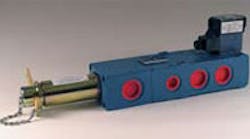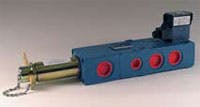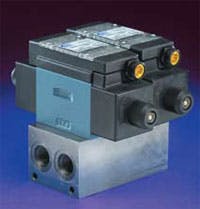As a designer, engineer, maintenance technician, or system assembler, you have a variety of products at your disposal to help ensure the safety of the hydraulic systems you work with. It is in everyone’s best interest to make the machines As Safe as Possible (ASAP). Formal safety standards are in a constant state of development, so many are being written or updated by ANSI, OSHA, and other organizations at any given time. Even though much of the documentation is always behind industry developments, we should always strive to achieve the best known safety practices. ANSI/ PMMI #B155.I-2006, ANSI TR4, ANSI B11.19, and ANSI Z244 are all useful and informative standards when looking for guidance on what is or will be required to be ASAP.
To help make your hydraulic systems ASAP, Continental Hydraulics offers double redundant dual monitoring packages and lock-out valves. Both offer a clean compact solution, either connected directly to the main power source or as part of a branch circuit feeding one of many work cells.
Double redundant dual monitoring products block off fluid flow and direct downstream fluid back to the reservoir, removing the potential for stored energy that could cause any adverse movement. It is equipped with two valves that must both be activated to allow fluid and pressure to continue to the circuit. If either valve is deactivated, the outlet port will be directed back to tank. The valves incorporate spool position monitoring switches and two pressure tap ports. This allows the control circuit to monitor the spool position and determine whether pressure is increasing or decreasing. This information can be used by system monitoring controllers to alert you of failure in the system or shut the machine off.
Lock-out valves are designed to assist in meeting the lockout-tagout requirements to protect technicians performing maintenance, repairs, or set-up operations where a central hydraulic system is providing power to multiple work cells. With flow capabilities to 100 gpm and an optional section for pneumatics, this product also removes any potential stored energy by routing downstream fluid back to tank. When deactivated, a spring offsets the valve’s locking stem, and an opening in the valve stem will accept padlocks to keep the valve from being shifted until the lock is removed.
Safety and monitoring products can pay for themselves through reduced machine downtime, fewer employee accidents, reduced time and money cost incurred investigating accidents, and possibly lower insurance rates.
This information was submitted by Vonn Bonnema, of Continental Hydraulics. For more information, call (952) 895-6400, or visit www.continentalhydraulics.com.



